Ever wondered if Red Oak is a good fit for your outdoor furniture? Let’s delve into the strengths and weaknesses of this popular wood. Ready to uncover the truth? Read on!

Red Oak is a popular wood for furniture, moldings, doors, and other construction purposes.
You are watching: Is Red Oak Good For Outdoor Use? (Find Out Now!)
We all know Red Oak is an excellent choice for indoor use.
But when it comes to the exterior applications, I was curious to know how red oak reacts with outdoor elements.
So, I did some research, and here’s what I’ve found, Is Red Oak good for outdoor use?
No, Red Oak is not ideal for outdoor use since lacks natural resistance to decay, rot, and pests, absorbs moisture easily, and can warp or discolor when exposed to the elements. For outdoor applications, weather-resistant woods like White Oak, Redwood, or Teak are better choices.
But that isn’t just a yes or no question especially because Red Oak is doing great indoors.
So, in this article, I’ll explore is Red Oak good for outdoor use, the advantages, and disadvantages of using Red Oak for outdoor use, and how to finish Red Oak for exterior use as well.
Furthermore, I’ll answer some frequently asked questions as well.
Let’s dig in!
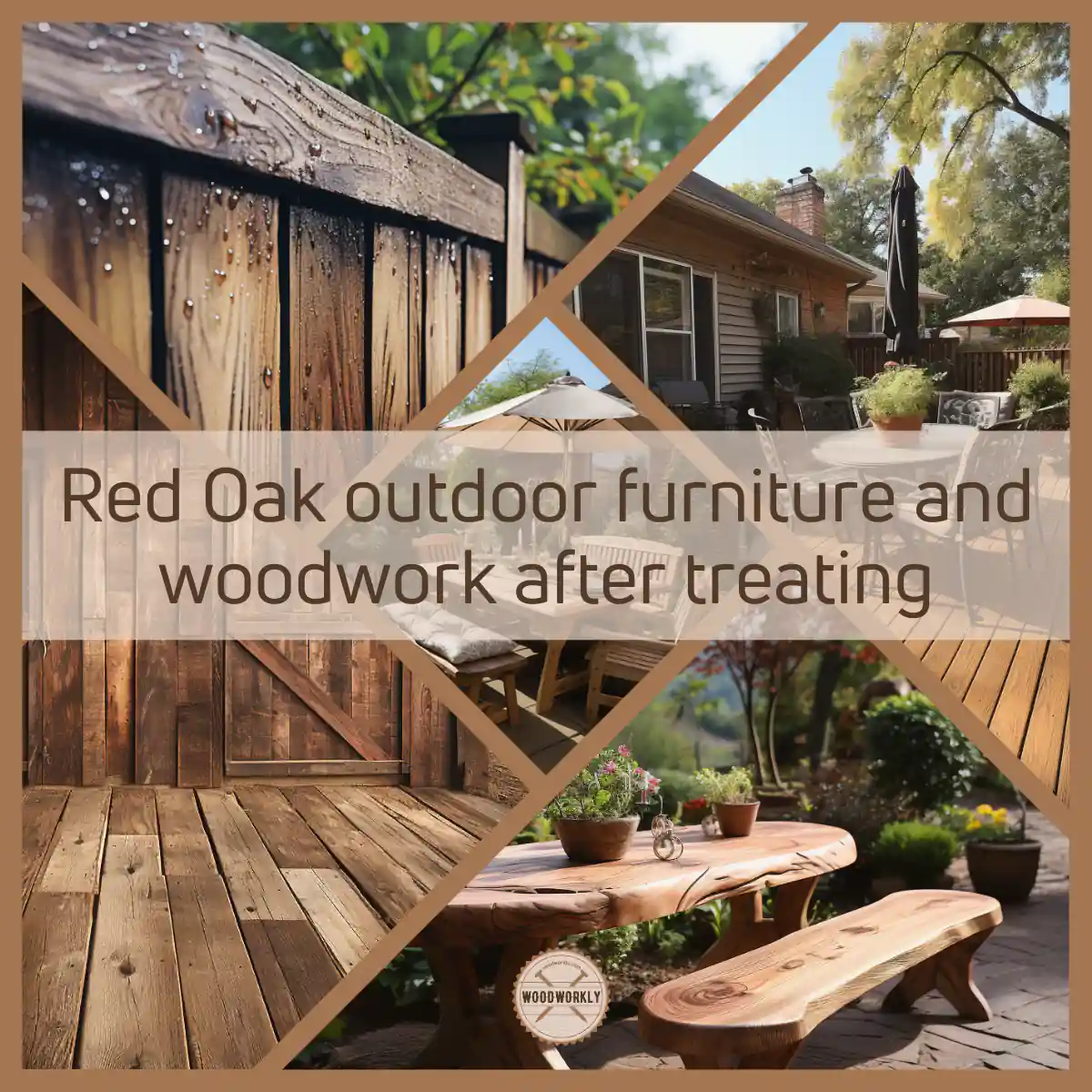
First of all, let’s get a quick look at what type of wood red oak is.
What Is Red Oak?
Red Oak, also known by its scientific name Quercus rubra, is a type of hardwood that is commonly found in North America.
This beautiful wood is well-known for its distinctive, warm aesthetic and characteristic straight-grain pattern.
Appearance and Characteristics
Red Oak has a pale yellow-brown color with a slightly reddish hue, hence its name.
Its grain pattern is straight and pronounced, making it a beautiful and unique choice for various woodworking projects.
One of the most distinctive features of Red Oak is its coarse and uneven texture, which can add a rustic and natural look to any piece of furniture.
Apart from its looks, Red Oak is also known for its strength and durability.
It’s a relatively hard hardwood, making it resistant to wear and tear from daily use.
This durability makes Red Oak a popular choice for heavy-duty items like tables, chairs, and flooring.
Now you have a good knowledge of what red oak looks like. So, let’s talk about the use of red oak in the outdoors.
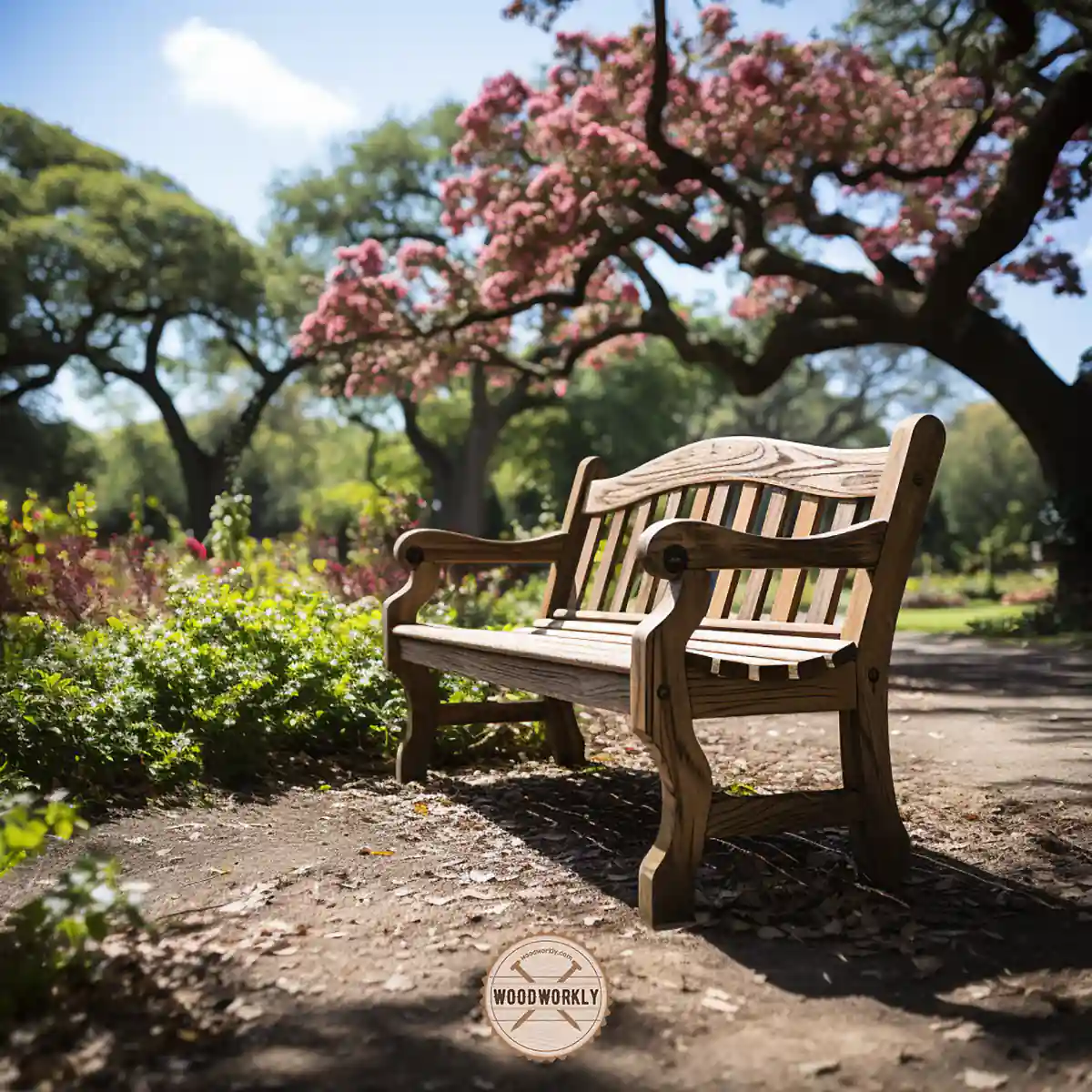
Can You use Red Oak for the Exterior?
Red Oak is not a good option for exterior use. It has an extremely porous structure that soaks up moisture from the outdoor environment.
But white oak has vessels called tyloses that prevent the absorption of water from the outside world and avoid wood rotting.
But in Red Oak, there are no tyloses to prevent water absorption. Therefore, it sucks up water from the atmosphere, and soil like a straw.
Because of the high moisture content inside of the Red Oak, it tends to rot and decay quickly.
Plus, tyloses help the wood to get protected from bugs, insects, and organisms. But because of not having a tyloses structure Red Oak is susceptible to insect and organism attacks.
Therefore, better not to use Red Oak for outdoor use.
Areas of Red Oak that get contacted with water or soil will turn into black color.
I’ve noticed Red Oak tables and chairs placed outside have legs with black tips where they touch the ground.
This is because the open pore structure of Red Oak wicks water into the table or chair and the legs will rot quickly.
But with proper finishing techniques, you’ll be able to seal the outer surface of the Red Oak and prevent it from soaking up moisture.
Sealers avoid wood from getting in contact with moisture, dirt, and soil and protect Red Oak from environmental elements.
But there’re some occasions, the sealer or finisher worn off the end grain due to high moisture levels and the water will get a chance to penetrate through the wood fibers to make them wet and rot.
Therefore, when you’re using Red Oak for outdoor use pay more attention to applying a quality sealing product that causes less trouble in the future.
Otherwise, your Red Oak furniture or woodwork will be ruined in a few months after keeping it outside.
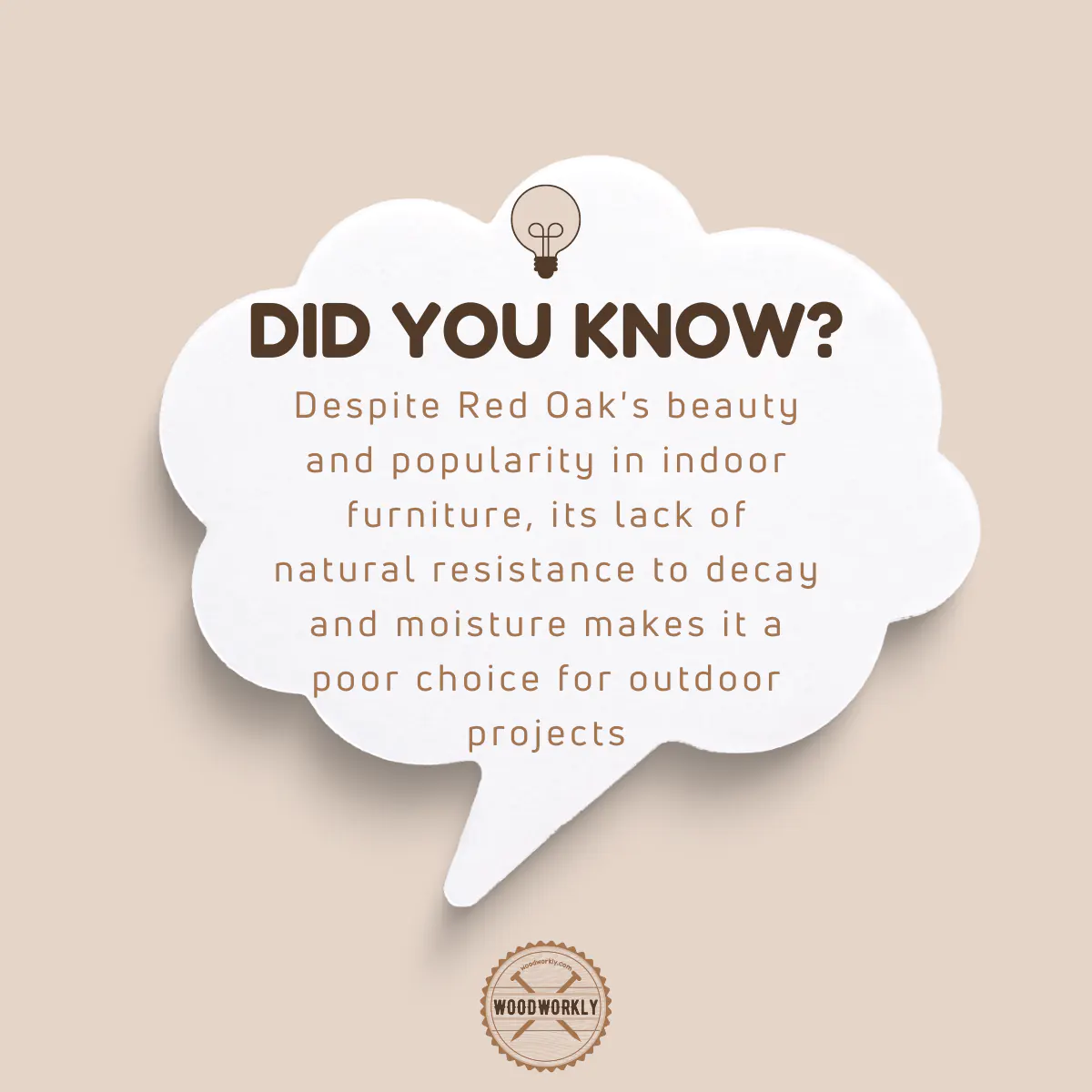
Why Red Oak Is Not Good For Outdoor Use?
Here’s a list of reasons why Red Oak is not suitable for outdoor use,
- Lack of natural resistance to decay and rot.
- Prone to warping and discoloration when exposed to elements.
- Lacks tyloses, leading to vulnerability to moisture absorption.
- Susceptibility to pests and insects.
- Poor ability to withstand harsh weather conditions.
- Tendency to absorb water from the surrounding environment, leading to damage.
- Greater risk of damage if not properly sealed or finished.
- High maintenance requirement to prevent decay and extend lifespan.
- Not as sturdy or durable as other hardwoods when used outdoors.
As you can see, Red Oak is a very poor choice for outdoor use unless you’re using a proper finishing technique.
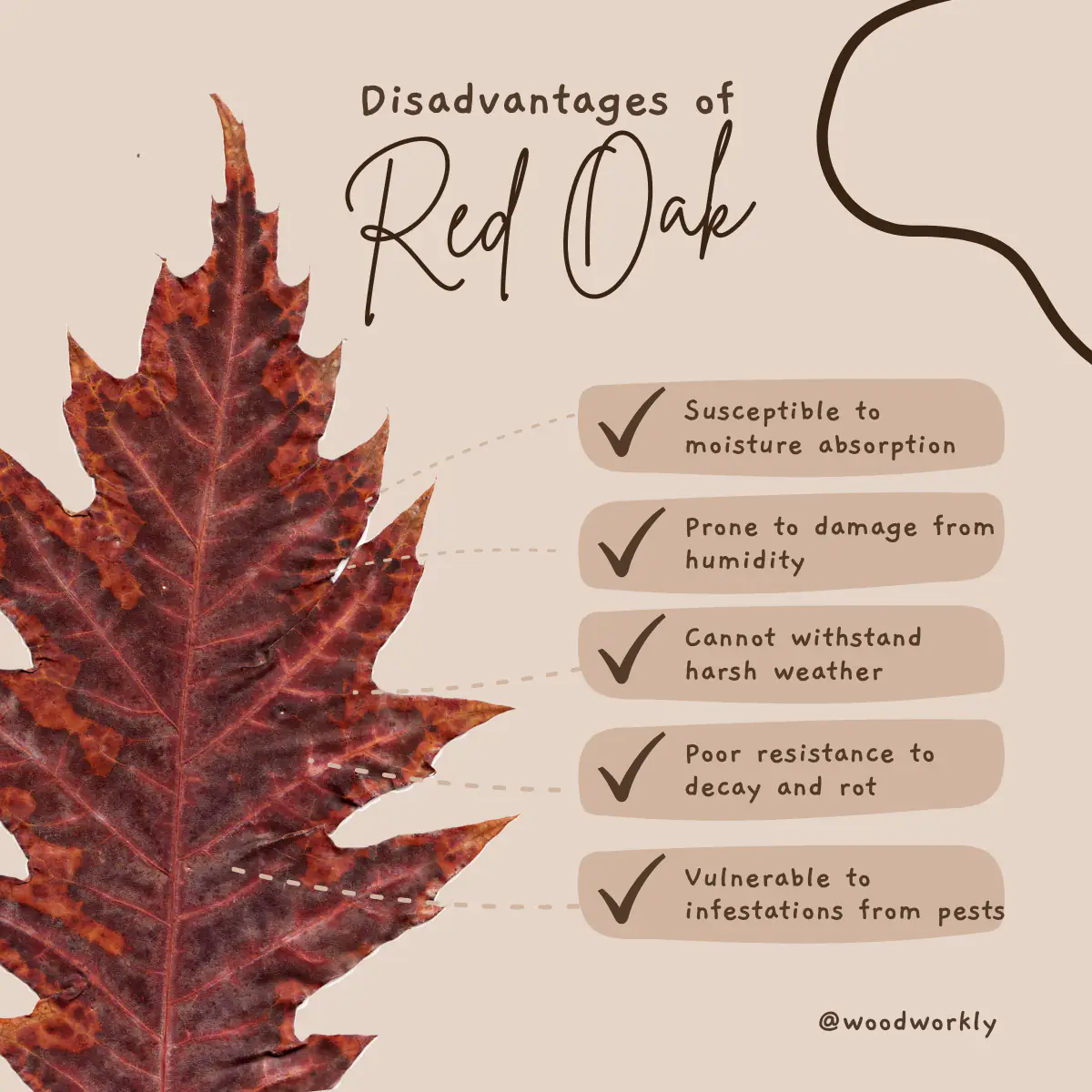
Advantages and Disadvantages of Red Oak for Outdoor Use
As we already know Red Oak is not the best wood for outdoor use, it gives some pretty good benefits as well.
Here’re some of the best pros and cons of Red Oak,
As you can see even though Red Oak has some significant benefits, it’s difficult to use outdoor due to poor resistance to environmental elements.
But most of the above disadvantages can be easily solved with proper finishing techniques.
Read more : Can Outdoor Lights Be Used Indoors?
Therefore, proper finishing is a must before keeping Red Oak outdoor.
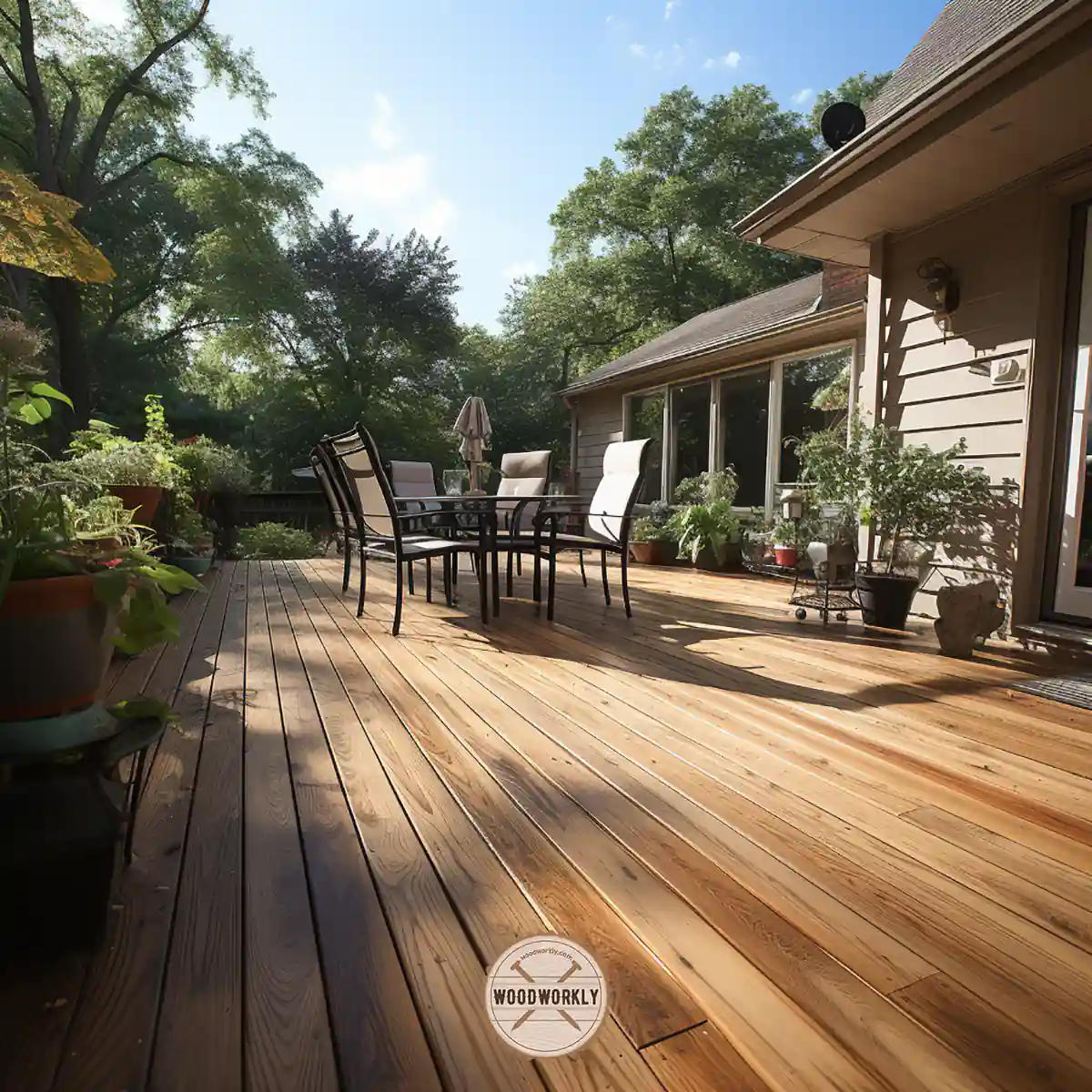
So, let’s find out how to finish Red Oak for outdoor use with the best and simplest finishing techniques.
First, see what tools and materials you need for that.
Supplies You Will Need To Finish Red Oak
- 220 grit sandpaper
- Wood stain product
- Wood conditioner
- Clean rags
- Gloves
- Paintbrush
Grab the above supplies from quality manufacturers and get ready to treat red oak outdoors.
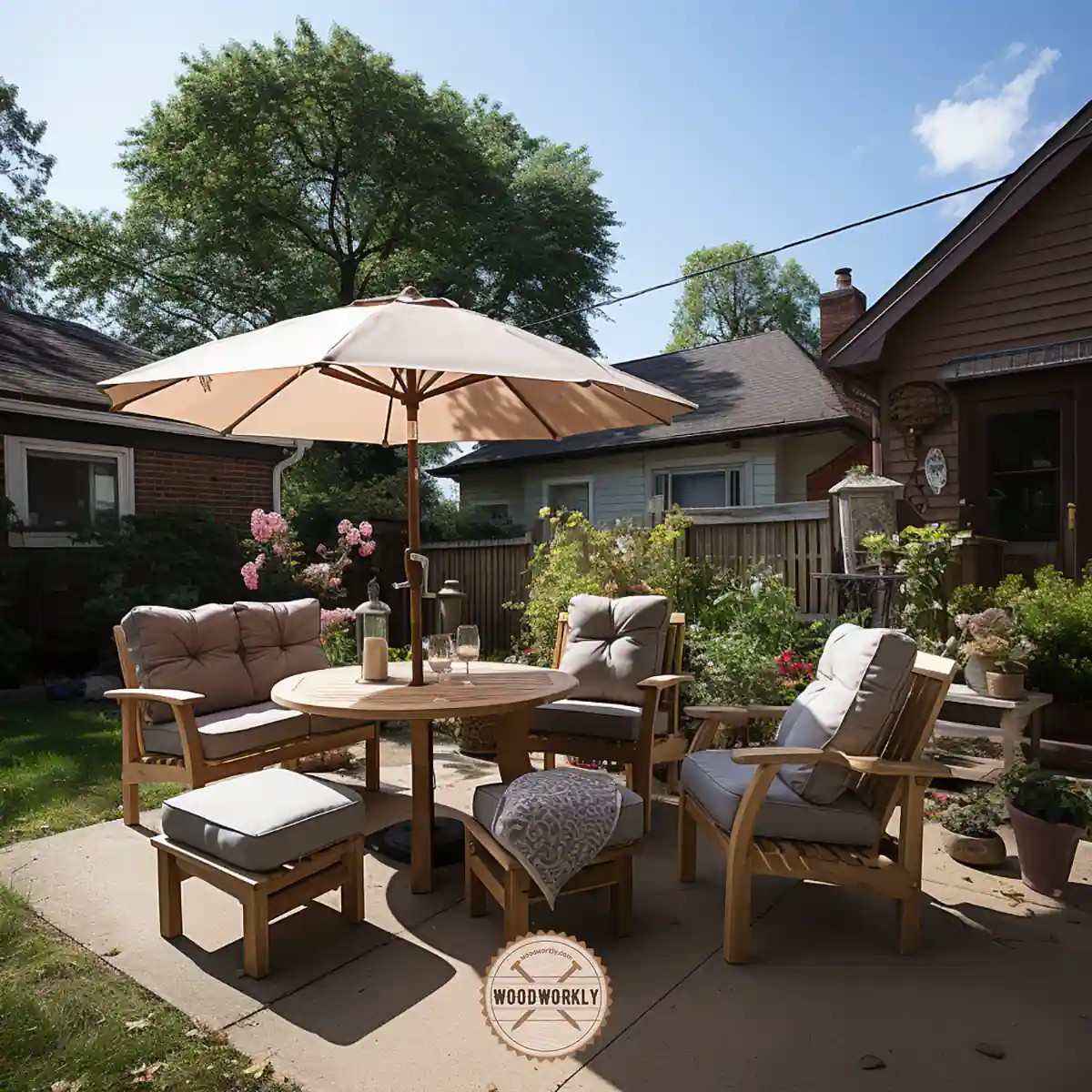
How To Finish Red Oak for Outdoor Use?
Red Oak takes stain so well. Because of having an open-porous structure the stain pigments easily get absorbed into the oak wood making a protective layer against environmental elements such as moisture, UV rays, climate changes, and many more.
Plus, Red Oak can be turned into any shade you want because of its excellent finishing properties.
By applying stain you’ll be able to make Red Oak suitable to use in an outdoor environment because it won’t get contacted with moisture, dirt, or soil that causes wood rotting.
If you applied wood stain correctly on Red Oak, you’ll be able to achieve a nice and smooth finish with a beautiful appearance for exterior use of Red Oak without any issues.
Here’re the steps you need to follow when finishing Red Oak for outdoor use,
- Clean the wood
- Sand and remove sawdust
- Apply wood conditioner and let it dry
- Apply wood stain
- Let the wood dry completely
So, let’s explore each of the above steps separately to get a better idea about staining Red Oak for outdoor use.
1. Clean The Wood
Cleaning is an essential step in wood staining. It helps to remove dust, debris, and other residues that can cause issues when applying wood stains.
Because if dust gets trapped inside wood stain, surface blotchiness can occur which is so difficult to fix.
Take the clean rags and wipe down the entire Red Oak surface to eliminate dust, debris, grease, and other residues.
Cleaning helps to unnecessary stuff on Red Oak and makes the wood ready to accept evenly.
2. Sand and Remove Sawdust
After cleaning the wood properly, and the entire Red Oak surface with 220 grit sandpaper.
Sanding helps Red Oak to eliminate any surface imperfections and make it smooth and nicer for better finishing.
Sand along the direction of the wood grain to avoid wood scratching and for better absorption of wood stain evenly.
Make sure not to use higher-grade sandpapers because Red Oak is softwood, and it can get damaged.
Plus, sand with even pressure all over the wood to avoid getting blotchy or splotchy surface.
After sanding the wood uniformly, clean and eliminate sawdust using rags.
Make sure not to miss any spots during cleaning because sawdust can cause lots of trouble if they get into the stain layer.
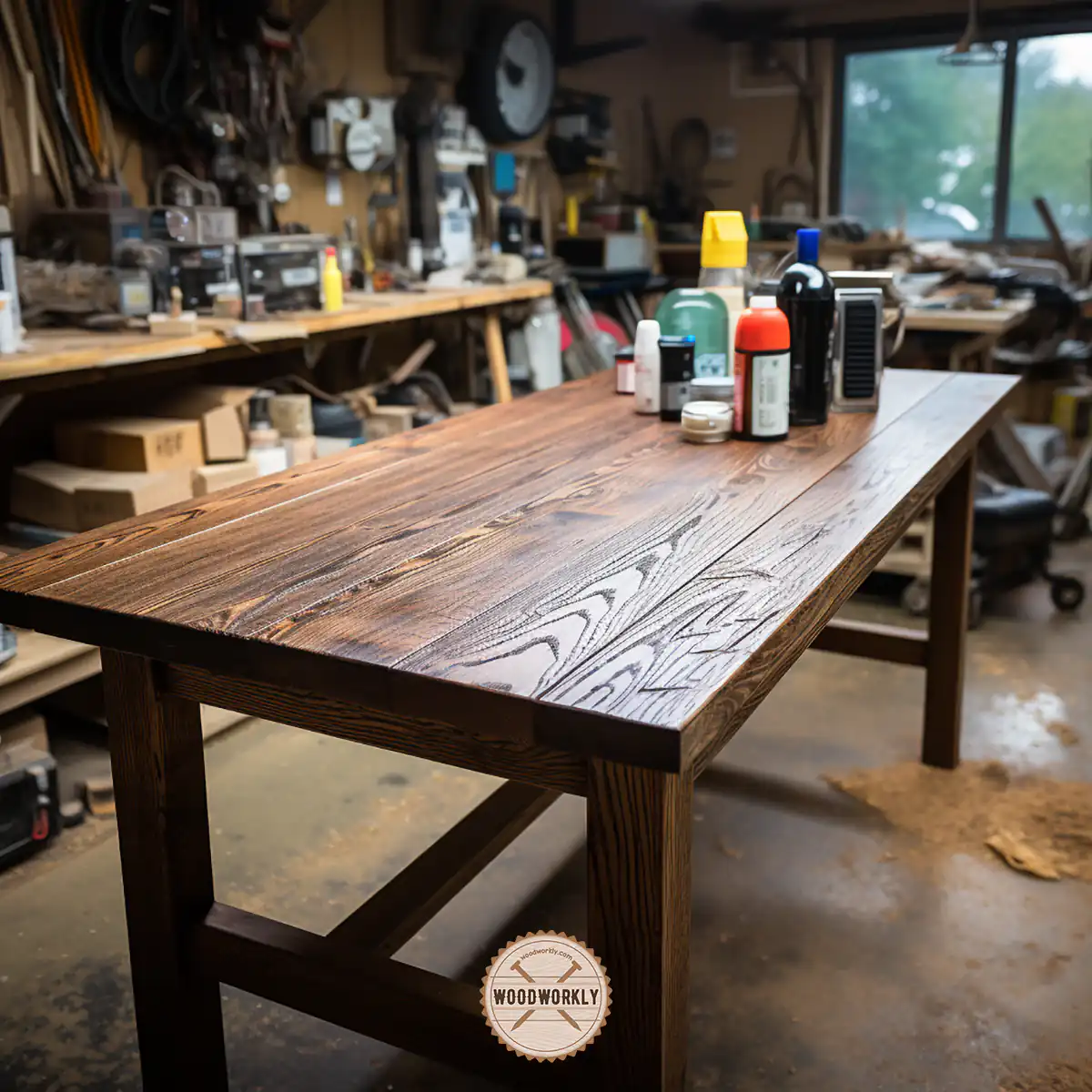
3. Apply Wood Conditioner
Wood conditioner helps Red Oak to take on stain uniformly without making any wood stain mistakes like bubbles, blotches, and streaks.
Therefore, applying a wood conditioner is necessary before staining Red Oak for better finishing.
After cleaning the wood properly, apply a pre-stain wood conditioner all over the wood without missing any spots.
Apply with even pressure on the paintbrush to avoid any randomness and brush along the direction of the wood grain for better acceptance.
Because of being an open porous wood Red Oak absorb stain so well and most stains tend to penetrate through Red Oak fibers rather than making a stain coating around the outer surface of the wood.
In order to save unnecessary usage of stains from getting inside the wood, apply a wood conditioner.
Wood conditioner limits the absorption rate of Red Oak and controls the stain absorption.
This will save the wood stain and able to make the top layer with less amount of stain.
Tip:
To avoid any incompatibility issues, I highly recommend you purchase both wood stain and wood conditioner from the same manufacturer.
After applying the pre-stain wood conditioner, let it settle on the wood for about 30 minutes, and then wipe off the excess stain with a damp cloth for better acceptance of stain.
4. Apply Wood Stain
When the wood is completely dry after applying wood conditioner, you’re good to go for the next and most important step, wood staining. Take the paintbrush and dip just the tip of it into the stain.
Then the stain will run up through the fibers and make them soaked.
Then apply stain all over the wood with gentle strokes.
Apply along the direction of the wood grain to avoid blotches and crossing with grain and brush strokes.
Distribute stain evenly throughout the wood with even pressure.
After applying the stain for 2 – 3 minutes wipe off the excess stain with rag cloths to get a thin efficient stain layer.
This coat of stain dries faster and minimize of occurring wood stain mistakes.
Red Oak can be stained with pretty much any shade you want.
Read more : Are My Cat’s Claws Too Long?
But you have to be wise to select the best one that matches your outdoor environment without ruining the natural look of Red Oak.
Apply wood stain in a well-ventilated area with good air circulation because wood stain may cause breathing issues.
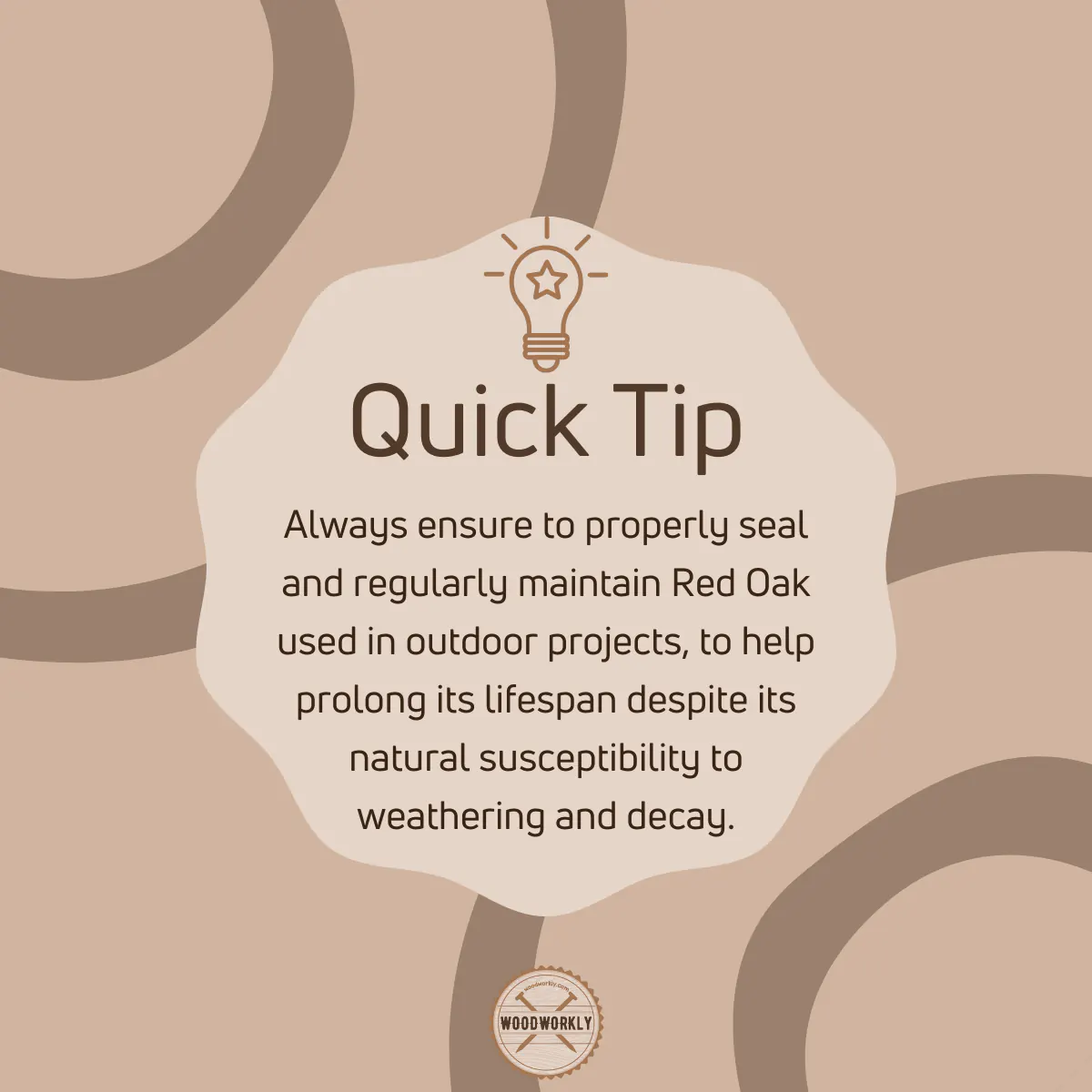
5. Let the Wood Dry Completely
After applying the stain all over the wood, let it dry for about 24 hours before heading into the next coat of stain.
One coat of stain is probably not enough for a highly porous wood like Red Oak.
Wait until the previous coat of stain dried completely before applying the next coat of stain.
Never apply stain when the surface is wet and tacky which can lead to surface blotchiness.
Surface blotchiness is hard to remove, and you’ll have to take down stain and wood conditioner layers and start the process from the very beginning.
Therefore, drying is so much impotent when it comes to finishing Red Oak for outdoor use.
That’s all about how to finish Red Oak for exterior use.
Hope you have gained an answer to the hot question, Is Red Oak good for outdoor use? The answer is Yes, but only with proper finishing.
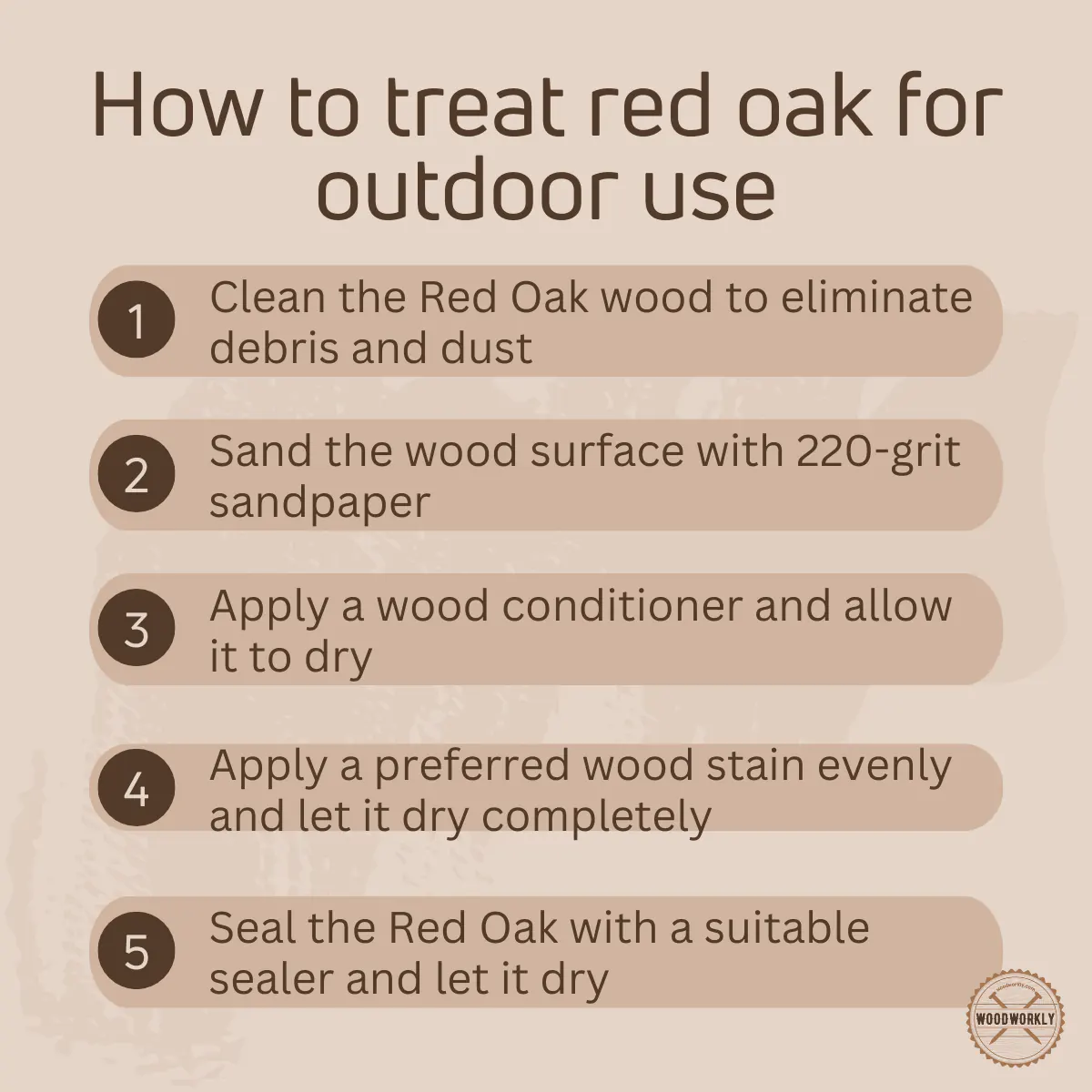
Is Red Oak Water Resistant?
Red Oak, in its natural state, is not particularly water-resistant.
This hardwood, beautiful and durable as it is for indoor furniture, lacks a key natural defense mechanism against moisture: tyloses.
These are cellular structures that block the wood’s pores, preventing water absorption.
Unlike White Oak, which has these tyloses, Red Oak’s open-pored structure allows for more water penetration.
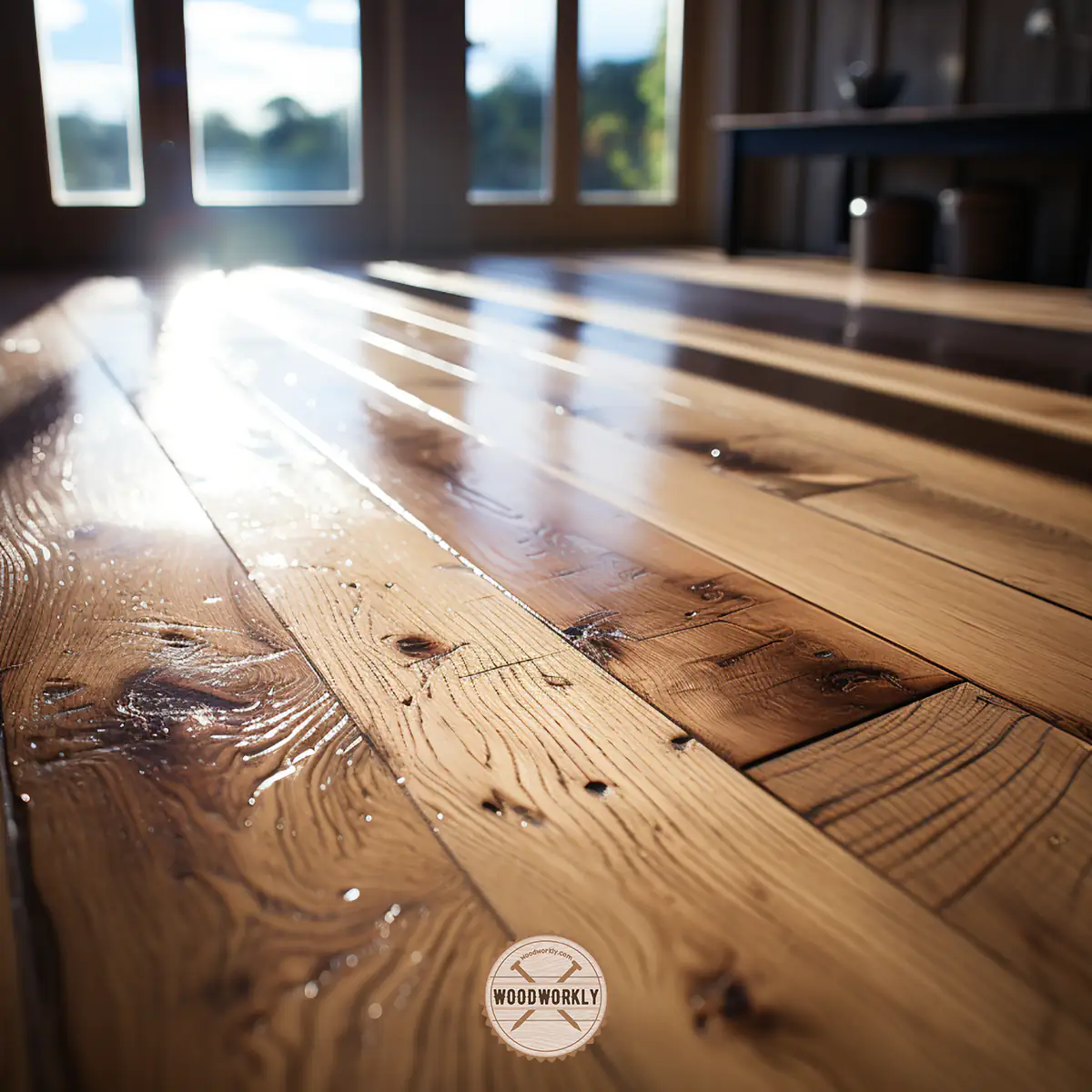
Consequences of Moisture Exposure
With its pores readily accepting moisture, Red Oak becomes more susceptible to several issues when used in damp or outdoor environments.
One of the primary concerns is decay. Without water resistance, Red Oak is prone to rotting when exposed to the elements.
This vulnerability to decay also makes it less suitable for environments with high humidity.
Furthermore, the lack of tyloses makes Red Oak more susceptible to pests, such as bugs and other damaging organisms.
This wood’s open pore structure provides an inviting home for these critters, which can further deteriorate the wood’s structure and aesthetic appeal.
While Red Oak is an excellent choice for various indoor furniture pieces due to its aesthetic appeal and workability, it’s not naturally water-resistant.
If you love the look of Red Oak and want to use it for outdoor furniture or structures, be prepared to put in extra effort to ensure its longevity.
After all, with good care and maintenance, Red Oak can still make a charming addition to your outdoor living space.
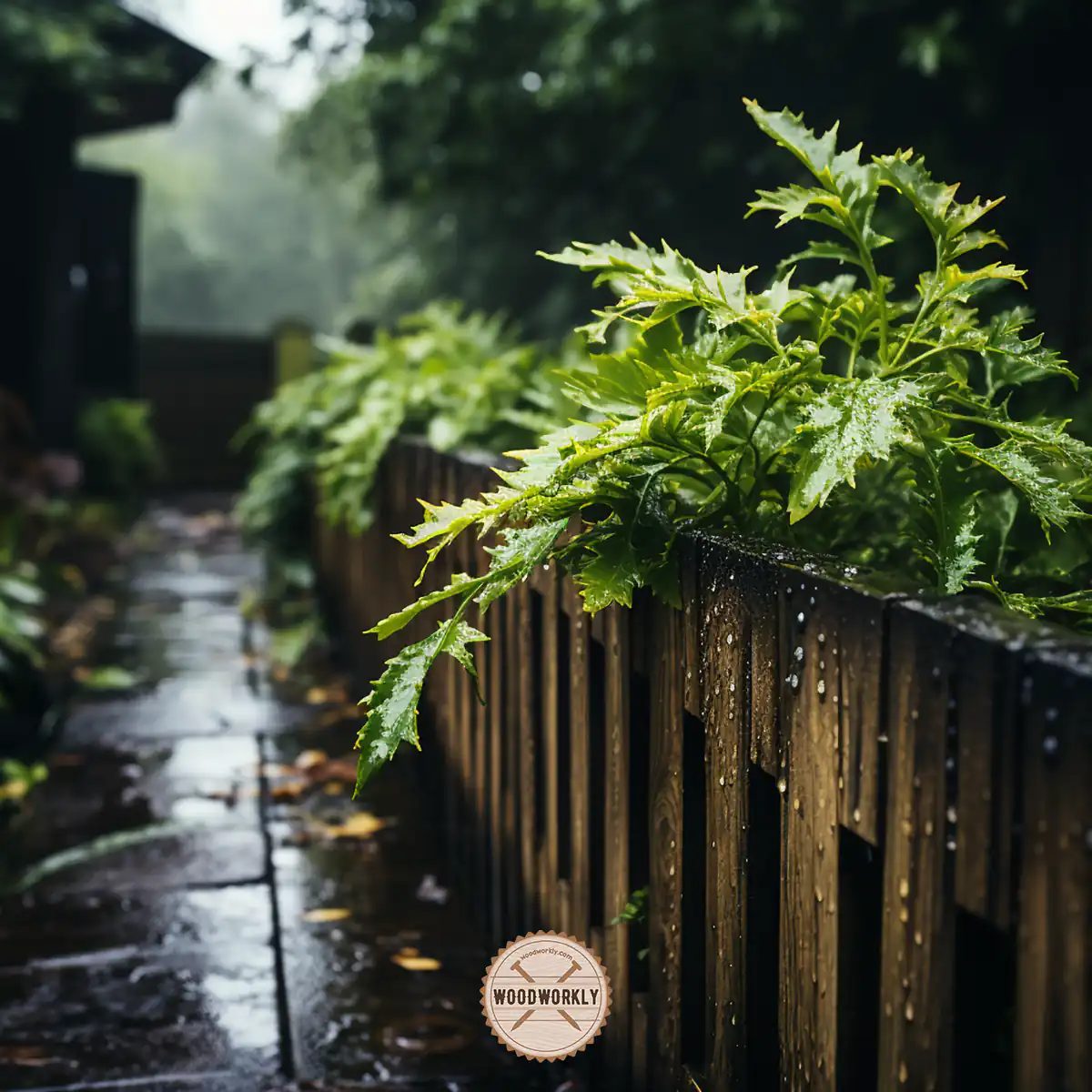
Is Red Oak Rot Resistant?
No, Red Oak is not rot-resistant. It has no natural resistance against rotting and decaying because Red Oak doesn’t have tyloses as white oak does to prevent moisture from getting inside of the wood.
Red Oak sucks up moisture like a sponge and its wood fibers get soaked quickly, therefore the wood will rot and decay faster.
You can reduce Red Oak from rotting by sealing the wood properly before keeping it outside.
Read to know, How to apply Danish oil on Red Oak?
Outdoor Applications of Red Oak
Even though Red Oak is not the best choice for outdoor use, with proper finishing you can use Red Oak for exterior applications without any fear.
Here’re some popular outdoor applications of Red Oak,
- Barn siding
- Tables
- Chairs
- Exterior door thresholds
- Fenceposts
- Veneer
How Long Will Red Oak Last Outside?
Red Oak lasts outside for about 3 – 5 years with proper finishing.
You can increase the lifetime of Red Oak with regular maintenance and not keep Red Oak woodworks or furniture in harsh weather conditions.
Without proper finishing or keeping Red Oak in bad climates, it won’t last for years.
The wood will start to rot and decay eventually because of the high moisture content and insect and fungi attacks.
Because of having tyloses white oak lasts outside much longer than Red Oak.
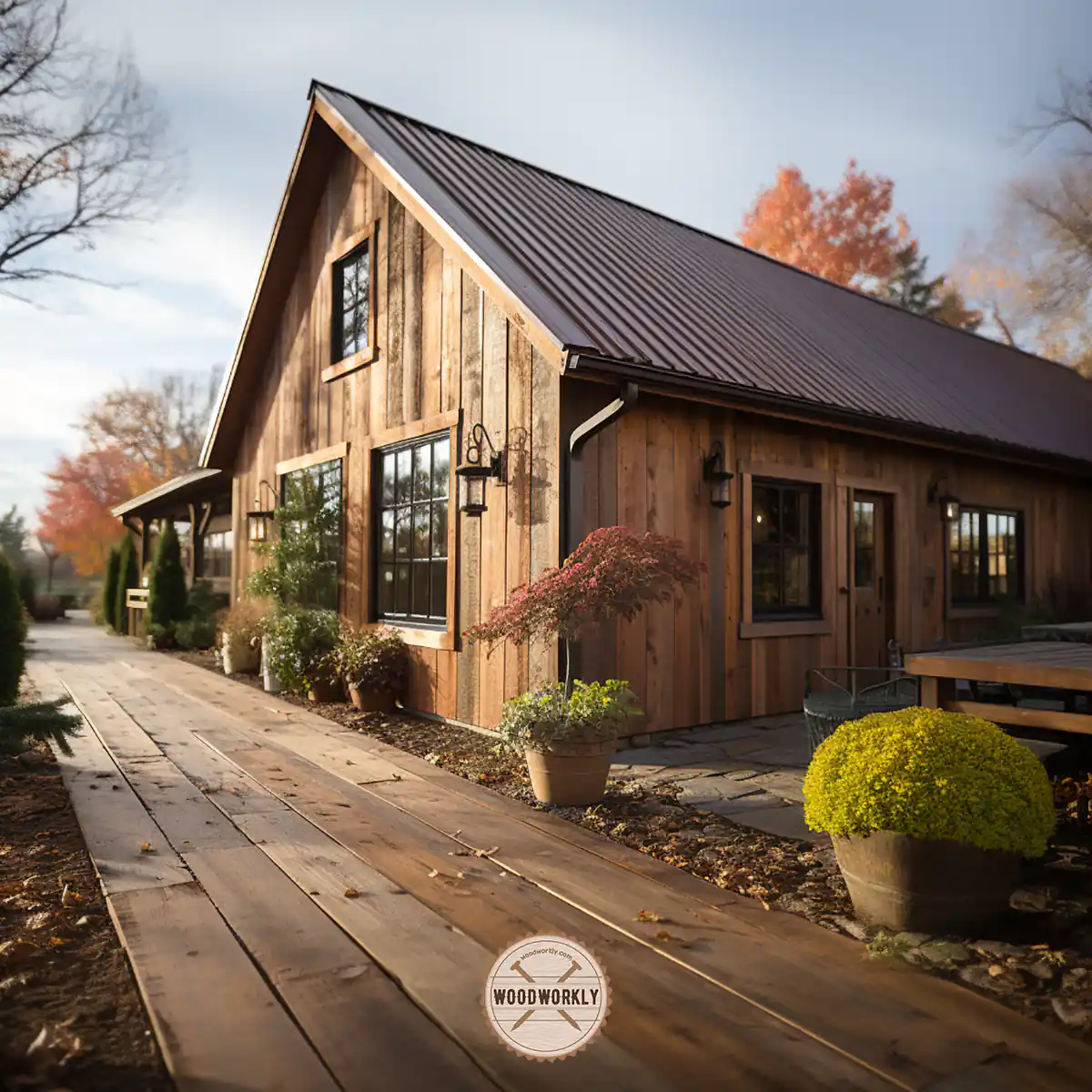
So, let’s answer some frequently asked questions.
FAQs
Did I cover all you wanted to know about: Is Red Oak Good for Outdoor Use?
In his article, I’ve deeply discussed is Red Oak good for outdoor use, the advantages, and disadvantages you’ll get by using Red Oak for exterior applications, and how to finish Red Oak before keeping them outside with proper simple finishing methods as well.
Red Oak is not good for outdoor use because Red Oak is an open-pored wood that soaks up water like a sponge. This leads Red Oak to rot and decay quickly in outdoor use. Because of having a lot of tannins, Red Oak tends to turn black when get contact with dirt, water, or soil.
But with proper finishing, you’ll be able to use Red Oak for outdoor applications for a much longer time.
Furthermore, I’ve answered some frequently asked questions as well.
Hope you have gained good knowledge about is Red Oak good for outdoor use with proven facts.
Make sure to do a proper finishing before keeping Red Oak outside for better protection. Keep learning and be a pro at woodworking.
Source: https://gardencourte.com
Categories: Outdoor


